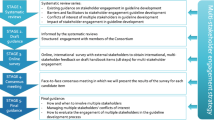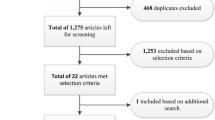Abstract
Recent research links perfluorooctanoic acid (PFOA) to increased breast cancer risk. Efforts to inform the lay public about potential risks associated with PFOA need to be accessible in their content as many individuals, including highly educated ones, have low scientific literacy. This study investigates the role of message format, as well as personal involvement, scientific literacy, and education in influencing attitudes about PFOA regulation. Participants (N = 2,078) were exposed to one of three message formats about PFOA and then responded to survey questions related to their attitude about the need for new regulation. Results revealed that issue involvement was positively related to favorable attitude regarding new regulation, while education and advocacy status were negatively related; cancer experience, scientific literacy, and message format did not influence attitude about new regulation. Implications of the results are discussed as they relate to communicating uncertain risk information to inform and influence lay individuals.
Similar content being viewed by others
References
American Cancer Society (ACS) (2010) How many women get breast cancer? http://www.cancer.org/Cancer/BreastCancer/OverviewGuide/breast-cancer-overview-key-statistics. Accessed 2 February 2011
Breast Cancer and Environmental Research Program. (BCERP) (2011) www.bcerc.org. Accessed 2 February 2011
Fromme H, Tittlemier SA, Volkel W, Wilhelm M, Twardella D (2009) Perfluorinated compounds—exposure assessment for the general population in western countries. Environ Health 212:239–270. doi:10.1016/j.ijheh.2008.04.007
Rudel RA, Attfield KR, Schifano JN, Green-Brody J (2007) Chemicals causing mammary gland tumors in animals signal new directions for epidemiology, chemicals testing, and risk assessment for breast cancer prevention. Cancer 109:2635–2666
United States Environmental Protection Agency (2006) PFOA Stewardship Program. http://www.epa.gov/opptintr/pfoa/pubs/stewardship/pfoastewardshipbasics.html Accessed 29 October 2010
Science & Environmental Health Network. (SEHN) (1998) Wingspread conference on the precautionary principle. http://www.sehn.org/wing.html Accessed 10 February 2011
Snyder LB, Hamilton MA, Mitchell EW, Kiwanuka-Tondo J, Fleming-Milici F, Proctor D (2004) A meta-analysis of the effect of mediated health communication campaigns on behavior change in the United States. J Health Commun 9:71–96. doi:10.1080/1081073049027t548
McCombs M (2004) The agenda-setting role of the mass media in the shaping of public opinion. Polity Press, Cambridge, UK
McGuire WJ (2001) In: Public communication campaigns, Rice RE, Atkin CK (eds) Input and output variables currently promising for constructing persuasive communications. Sage, Thousand Oaks, CA, pp 22–48
Chaiken Shelly, Akiva Liberman, Eagly AH (1989) In: Unintended Thought, Uleman J (eds) Heuristic and systematic processing within and beyond the persuasion context. Guilford Press, New York, pp 212–252
French KS, Larrabee JH (1999) Relationships among educational material readability, client literacy, perceived beneficence and perceived quality. J Nurs Care Qual 13:68–82
Dowe MC, Lawrence PA, Carlson J, Keyserling T (1997) Patients’ use of health-teaching materials at three readability levels. Appl Nurs Res 10:86–93. doi:10.1016/S0897-1897(97)80151-6
Smith S, Clark-Hitt R, Nazione S, Russell J, Silk K, Atkin C (2011) The effects of heuristic cues, motivation, and ability on systematic processing of information about breast cancer environmental factors. J Health Commun (in press)
Bates BR, Romina SM, Rukhsana A (2007) The effect of improved readability scores on consumers’ perceptions of the quality of health information on the internet. J Cancer Educ 22:15–20
Katz MG, Kripalani S, Weiss BD (2006) Use of pictorial aids in medication instructions: a review of the literature. Am J Health-Syst Ph 63:2391–2397. doi:10.2146/ajhp060162
Marshall HM, Reinhart AM, Feeley TH, Tutzauer F, Anker A (2008) Comparing college students’ value-, outcome-, and impression-relevant involvement in health-related issue. Health Commun 23:171–183. doi:10.1080/10410230801968252
Burton S, Netemeyer RG (1992) The effect of enduring, situational, and response involvement on preference stability in the context of voting behavior. Psychol Mark 9:143–156
Cho H, Boster FJ (2005) Development and validation of value, outcome, and impression relevant involvement scales. Commun Res 32:235–264. doi:10.1177/0093650204273764
Hubbard G, Kidd L, Donaghy E, McDonald C, Kearney N (2006) A review of literature about involving people affected by cancer in research, policy and planning and practice. Patient Educ Couns. doi:10.1016/j.pec.2006.02.009
Kennedy JJ (2008) Maintaining popular support for the Chinese communist party: the influence of education and the state-controlled media. Polit Stud-London. doi:10.1111/j.1467-9248.2008.00740.x
Zaller JR (1992) The nature and origins of mass opinion. Cambridge University Press, New York
Miller JD (1983) Scientific literacy: a conceptual and empirical review. Daedalus 112:29–48
Michigan State University (2007) Scientific literacy: how do Americans stack up? ScienceDaily. http://www.sciencedaily.com/releases/2007/02/070218134322.htm Accessed 10 August 2010
Choi J, Yang M, Chang JCJ (2009) Elaboration of the hostile media phenomenon: the roles of involvement, media skepticism, congruency of perceived media influence, and perceived opinion climate. Commun Res 36:54–75. doi:10.1177/0093650208326462
Acknowledgement
Supported by the Breast Cancer and the Environment Research Centers Grant number U01 ES012800 from the National Institute of Environmental Health Sciences (NIEHS), and the National Cancer Institute (NCI), National Institute of Health (NIH), Department of Health and Human Services (DHHS). Its contents are solely the responsibility of the authors and do not necessarily represent the official views of the NIEHS or NCI, NIH.
Author information
Authors and Affiliations
Corresponding author
Appendix A
Appendix A
Poster condition

Message Conditions
Scientific Condition
PFOA Project Message for Translation and Dissemination
Perfluorooctanoic acid (PFOA), also known as C8 and perfluorooctanoate, is one of the most common man-made persistent environmental pollutants. PFOA causes liver, pancreatic, and testicular tumors in rodents. Unexpected high blood serum levels of PFOA were detected in a group of young pre-pubertal girls between 6 and 8 years of age. Most health effects of PFOA exposure have been studied in adults who received occupational exposure. The potential health effects of PFOA exposure in young girls of peripubertal age are not known. The peripubertal age in humans is thought to be a period of high sensitivity to environmental pollutant exposures that may increase the risk of developing breast cancer later in life.
To determine the possible health effects that might be relevant to breast cancer risk, we carried out PFOA exposure studies in young female, peripubertal mice. For these studies, we used 2 different strains of mice to include consideration of the effect of differences in genetic makeup in determining what effects PFOA might have. We found that treatment with PFOA accelerated mammary gland development in the C57BL/6 mouse strain, but the same dose, delayed or inhibited mammary gland development in the BALB/c mouse strain. The ovaries produce hormones, estrogen, and progesterone, needed for normal mammary gland development. PFOA exposure adversely affected ovary function in BALB/c mice, but did not show an obvious toxic effect on ovary function at the same dose in C57BL/6 mice. The uterus is another organ regulated by estrogen and progesterone. Increasing doses of PFOA had an adverse effect on the uterus leading to decreased size. This effect was more prominent in BALB/c mice. Age at vaginal opening is one measure of the timing of pubertal development in mice. PFOA treatment caused a delay in the age at vaginal opening that was similar in both mouse strains. Damaging effects of PFOA exposure on liver were found in both strains of mice and caused an abnormal increase in the size of liver cells. Also, clearance time of PFOA from the blood differed in the two mouse strains. The differences in the effects of PFOA in our studies using two strains of mice with different genetic makeup indicate that, in humans, a person’s genetic makeup is likely to play a critical role in determining the effect of PFOA. The animal PFOA body burden was much higher in our exposed mice than in the exposed girls. This may be related to differences in the time required to clear half of the PFOA from the body: 17 days for mice and 3 years for humans. At present, it is not known how body burden in mice translates to body burden in humans. We are currently determining the effect of peripubertal PFOA exposure in mice on susceptibility to develop breast cancers by either itself or when combined with a known breast cancer inducing agent.
Lay Condition
Health Effects of the Chemical PFOA on Mice
One of the most common man-made long-lasting pollutants found in our environment is perfluorooctanoic acid (PFOA). This chemical is found in foods, drinking water, some cookware, and industrial products. It leads to tumors in the liver, pancreas, and testicles of mice and rats. Most human studies on the health effects of PFOA contact involve adults who have handled it for their jobs. Not long ago, high levels of PFOA were found in a group of 6- to 8-year-old girls. We are not sure whether this will have harmful health effects in the future. However, a young girl is thought to be more easily affected by pollutants before she starts her period than after that time. Scientists are worried that contact with pollutants could cause a person’s risk of (chances of getting) breast cancer later in life to go up.
In our study, we wanted to find out the possible health effects of PFOA that might be linked to breast cancer risk. We did PFOA contact studies in young female mice before their first period. We used two kinds (strains) of mice that had different genetic makeups. One is called the C57BL/6 strain and the other is the BALB/c strain.
We found that contact with PFOA had opposite effects on the mammary glands (breasts) of the two strains. In the C57BL/6 strain, PFOA made the breast grow larger and faster than normal. In the BALB/c strain, the breasts grew more slowly or not at all. This finding might have to do with the impact of PFOA on the ovaries.
The ovaries produce two hormones called estrogen and progesterone. These are needed for normal breast growth in both mice and girls. PFOA contact seemed to stop the role of the ovaries in BALB/c mice. It did not show a harmful impact on the role of the ovaries for the C57BL/6 mice. Our studies also found that PFOA led to larger uterus size in C57BL/6 mice and smaller uterus size in the BALB/c mice, a later age of first period in both strains, and liver damage in both strains.
We also found that the amount of PFOA that stayed in the blood was different between the two strains. The PFOA “body burden” is the amount of these harmful chemicals that remain in the body. This was much higher in the mice with PFOA contact than in the girls. This may be because of differences in the time it takes to clear PFOA from the body between mice and humans. Right now, we do not know how the effects of the body burden in mice compare to the effects of the body burden in humans.
The different effects of PFOA between the two strains are a key finding. It shows that a person’s genetic makeup is likely central in the effects of PFOA. Right now, we are looking at the impact of contact with PFOA before a mouse’s first period on breast cancer risk. We are looking at the effect of contact with PFOA by itself and when combined with an agent that is known to cause breast cancer.
Rights and permissions
About this article
Cite this article
Silk, K.J., Nazione, S., Neuberger, L. et al. Investigating the Impact of Message Format, Involvement, Scientific Literacy, and Education on Attitude Toward Reducing Cancer Risk Through Regulation. J Canc Educ 27, 172–178 (2012). https://doi.org/10.1007/s13187-011-0287-y
Published:
Issue Date:
DOI: https://doi.org/10.1007/s13187-011-0287-y




